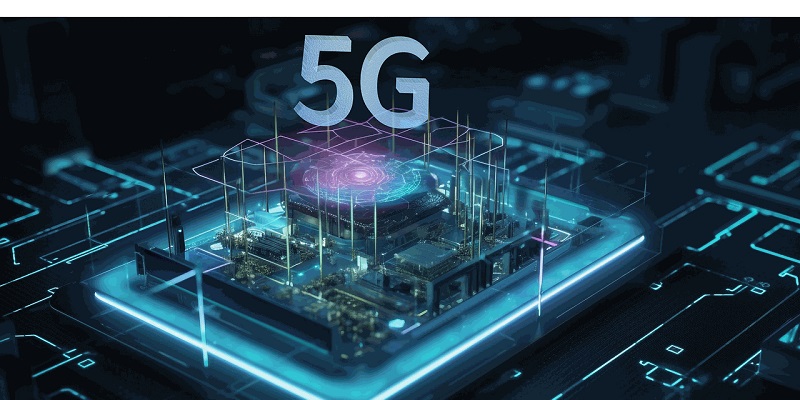The world is on the brink of a technological revolution with the introduction of 5G, the fifth generation of wireless technology. Gone are the days when faster internet was the sole focus of network advancements. 5G promises to revolutionize connectivity, offering lower latency, higher bandwidth, and the remarkable capability to connect billions of devices simultaneously.
Advantages of 5G technology
One of the most significant advantages of 5G is its unprecedented low latency. With 5G’s ultra-low latency, data can be transmitted almost instantaneously, drastically reducing response times. This breakthrough technology empowers critical applications such as real-time gaming, virtual reality, and remote surgical procedures, where delays in data transmission can have severe consequences.
Moreover, 5G brings forth higher bandwidth, enabling faster data speeds. With wider bandwidth, 5G ensures seamless communication between devices, allowing for real-time streaming, uninterrupted video calls, and rapid downloads. This enhanced speed will transform industries and unlock new possibilities in research, communication, and entertainment.
Utilization of millimeter waves (mmWave)
5G operates on higher frequency bands, utilizing millimeter waves (mmWave). These high-frequency waves allow for increased capacity and speed, offering astonishing data transfer rates. However, harnessing the potential of mmWave technology requires a denser network infrastructure due to the shorter range of these waves. This necessitates the installation of more cell towers and small cell sites to maximize coverage and ensure seamless connectivity.
Infrastructure requirements for 5G
Although the deployment of 5G requires substantial infrastructure investments, the benefits are unparalleled. The increased capacity and speed offered by 5G necessitate the expansion of network infrastructure to keep pace with the growing demand for data. Governments, network providers, and technology companies are working together to build the necessary infrastructure to support this groundbreaking technology.
Ultra-low latency in 5G
One of the defining features of 5G is its ultra-low latency. In simple terms, latency refers to the time it takes for data to travel between devices. With almost instantaneous data transmission, 5G eliminates the noticeable delays experienced in previous generations. This breakthrough capability will revolutionize industries such as autonomous vehicles, remote surgery, and real-time communication applications.
Faster data speeds with 5G
By leveraging wider bandwidths, 5G delivers exceptional data speeds to users. Gone are the days of waiting for downloads, buffering videos, or experiencing lag in online games. The faster data speeds provided by 5G enable seamless communication between devices, ensuring a smoother, more immersive user experience and opening up new possibilities in fields such as augmented reality and IoT.
Connectivity of numerous devices with 5G
The Internet of Things (IoT) is rapidly expanding, with billions of devices requiring connectivity. 5G can handle this immense volume of simultaneous connections, making it the ideal solution for the IoT’s communication needs. With 5G, smart homes, smart cities, and automated industries will become a reality, empowering greater efficiency and productivity across various sectors.
Impact of 5G on smart cities
As 5G unfolds, it will play a pivotal role in transforming cities into smart and sustainable ecosystems. With the ability to optimize traffic flow, reduce energy consumption, and enhance safety, 5G will revolutionize urban living. From intelligent transportation systems that provide real-time traffic updates to smart grids that optimize energy usage, 5G will pave the way for innovative advancements that ensure a better quality of life for citizens.
Applications in the healthcare industry with 5G
The healthcare industry stands to gain immensely from the low latency and reliability of 5G. Remote patient monitoring will become more efficient, enabling healthcare professionals to monitor vital signs and deliver personalized care remotely. Robotic surgeries will flourish, with surgeons leveraging the near-instantaneous transmission of data to perform intricate procedures from remote locations. Furthermore, telemedicine will become more accessible, reaching patients in remote areas and revolutionizing healthcare delivery.
Role of 5G in the autonomous vehicle industry
5G’s low latency and high bandwidth will be the backbone of the autonomous vehicle industry, making autonomous transportation safer and more efficient. With reduced latency, vehicles can communicate with each other and the transportation infrastructure in real time, enabling swift and precise decision-making. This level of connectivity will minimize accidents, optimize traffic flow, and revolutionize public transportation.
As the world embraces the fifth generation of wireless technology, the transformative potential of 5G becomes increasingly evident. With its lower latency, higher bandwidth, and remarkable connectivity capabilities, 5G is set to revolutionize industries, from healthcare and transportation to communication and entertainment. The deployment of this groundbreaking technology brings us closer to the realization of smart cities, remote surgeries, and seamless connectivity for billions of devices. 5G is not just about faster internet; it is about reshaping the way we live, work, and connect in a digitally advanced world. Buckle up and get ready to embark on a remarkable journey into the boundless potential of 5G technology.

